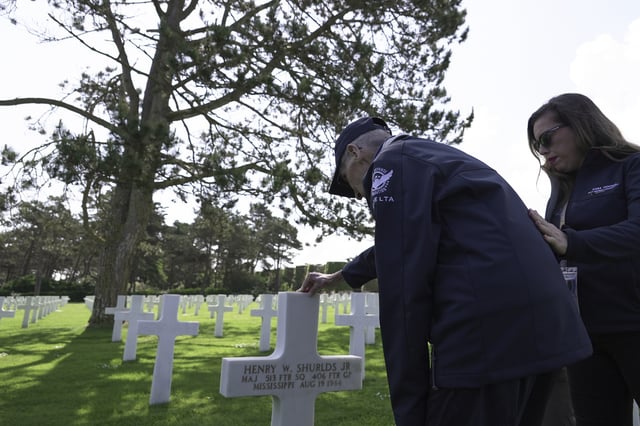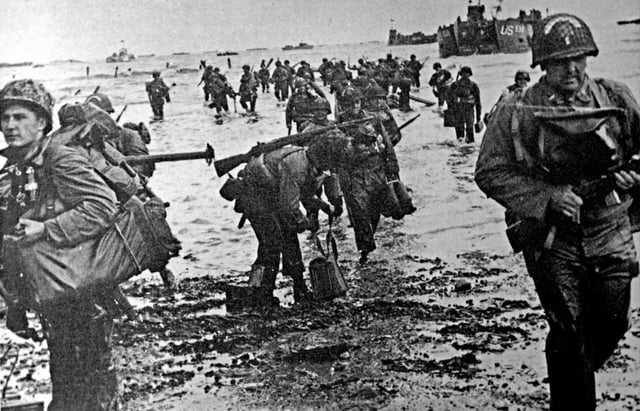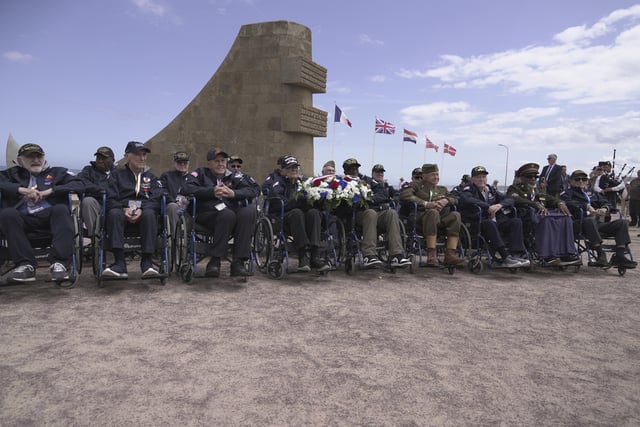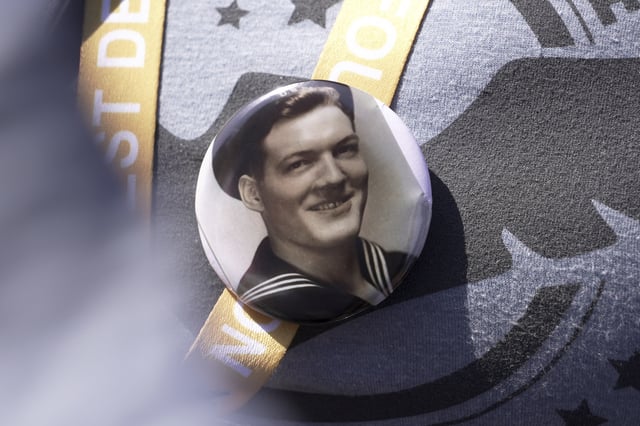Overview
- D-Day ceremonies on June 6 drew thousands of attendees for parachute jumps, remembrance ceremonies and historical reenactments at Normandy beaches.
- About two dozen surviving veterans in their late 90s and older returned to Omaha Beach as one of the smallest groups since commemorations began.
- Only around 1% of the roughly 156,000 British, American and Canadian troops who stormed five Normandy beaches in 1944 are still alive, reinforcing calls to record their testimonies.
- Volunteers at the Normandy American Cemetery rubbed beach sand onto 9,400 white gravestones to make the engraved names of American war dead more visible.
- Allied meteorologist Maureen Sweeney’s 1944 forecast from Ireland was credited with pinpointing the brief weather window that allowed Operation Overlord to proceed.



